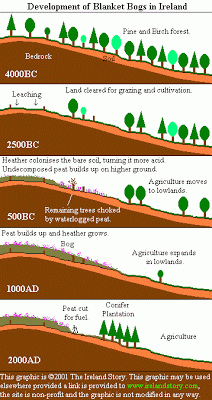When Christmas Carols Were Jolly Dances
O’ Come All Ye Faithful
For many of us, Christmas carols remind us of groups of people singing in town squares, maybe the Salvation Army band; the nativity scenes at schools and the special services in churches.
For some people the most important experience of Christmas is the a Midnight Mass at the parish or local church. May people believe that carols are the purest way to celebrate Christ's birth along with sharing friendship and union with those who sing along. This is followed by joyous exchanges of greetings and well wishing before returning home through the "christmassy" winter air for some sleep before the home celebrations begin.
How long has this ritual been with us?
Interestingly, for most of the life of the various species of Christian churches, carols have been condemned and banned by them. The churches condemned caroling as a pagan practice and even in 1647 the Puritans not only banned caroling but also mince pies.
I believe it was about 1800 when caroling started to appear in Churches, as many of the elements we think of as "Christmas" were starting to become established then such as Christmas Cards, Advent Calendars, Christmas Trees, Santa Claus etc.
The Holly And The Ivy
One of my favourite Carols is "The Holly And The Ivy". Most people know this to be sung with a fairly pompous and very melodic ballad tune that's probably 200 years old. The words and verses of this carol actually had a jolly jig tune that dates back about 1000 years. When I was an active singer and musician during the 70s and early 80s we used to enjoy sharing this song with its jig tune. Though words related to Jesus Christ are now within "The Holly And The Ivy" it was originally about nature's union of the spirits of the male and female to create new life. Holly is an extremely masculine symbol, within the mythology of the Green Man, so it is a surprise that in the USA it has become a popular girl's name during the past 20 years.
"Carol" has, in a round about way, comes from an old French word meaning "a song to go with a jolly ring dance". Very few of the "pompous" carols shared in churches today may be regarded as suitable for breaking out into a ring dance.
Another seasonal song I enjoy is "Here We Come a Wassailing", which I have yet to hear in a church, but is wonderfully about merrymaking and blessing good fortune on those who here the song. Its about celebrating a good apple yield from the past year and praying for a for a good yield the following year. I covered Wassailing in my last blog
One thing I did not mention was how the remains of the wassail cup, after folks had dipped and shared their toasts within it, was poured around apple trees to attract fertility to them for another year.
God Rest Ye Merry Gentlemen
Another carol I enjoy is "God Rest Ye Merry, Gentlemen" which is said to date back to 13th to 15th centuries and developed through a tradition of night watchmen who would join together for singing before Christmas, and the song is largely about their culture.
For up to 1700 years, church leaders have tried to encourage the banishment of merry carol tunes being shared and celebrated but the people continued to use them to celebrate Christmas with gusto for several days before arriving for Christmas Mass. It is, therefore, with no surprise that carols that eventually entered the church services as a compromise shed their dance tunes to be replaced by more pomp and ceremony tunes.
Charles Wesley seems to have been the hymn writer that found a way to get carol singing into the church without offending the church. He wrote pomp and almost saluting "classics" such as Hark the Herald Angels Sing, and O Come All Ye Faithful.
When we think of carols some of us also think of the famous Charles Dickens novel, "A Christmas Carol". Surprisingly, by 1843 when his book was published carol services in churches was still in minority acceptance and still challenged by many church leaders. However, at this time Victorians loved to show off their writing skills, wrote down the carols they heard or copied from books and then gathered their families to learn them and sing them from home.
Sadly, as the pomp, ceremony and even solemn collections of carols became accepted and shared in churches their "jolly dance" origins began to fade.
Here We Come …..
The origin of carols are truly tightly connected to the origins of Mummers Plays, mentioned in my last blog
The completion of a mummers performance led into a revelry of music and dances with the dances being accompanied by the verses that have since become Christmas caroling standards. Carols were simply another ritual for celebrating the wonders and gifts of nature and a perfect conclusion to any quiet rituals of prayers and blessings that connect with the spirits of nature.
There is a wonderful ambience of listening to a choir in a church or country house drawing room reciting the "formal" carols largely evolved from early 19th century churches and adapted by their hymn writers. In a couple of days I will be going to an Anuna Concert in Dublin for that wonderful experience. Even Cromwell would probably approve of an Anuna concert
.... but there's a side of me that experiences a complete deep re-juvinating of life from a home or village green ceili of mummers, wassailers, and genuine ring dance carolers. Not a sshhhhh !!!! to be heard, yet the spirit of midwinter, and I also feel the purest spirit of the birth of "Christ", is truly honoured.


Comments
Post a Comment